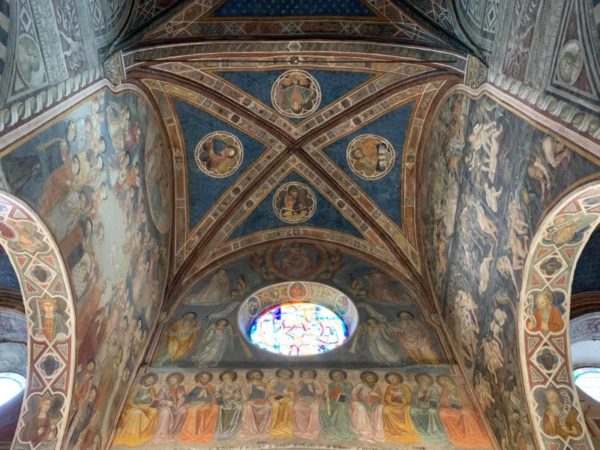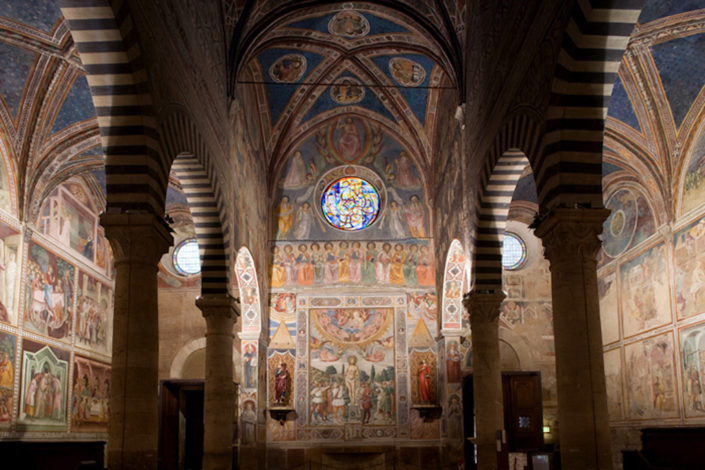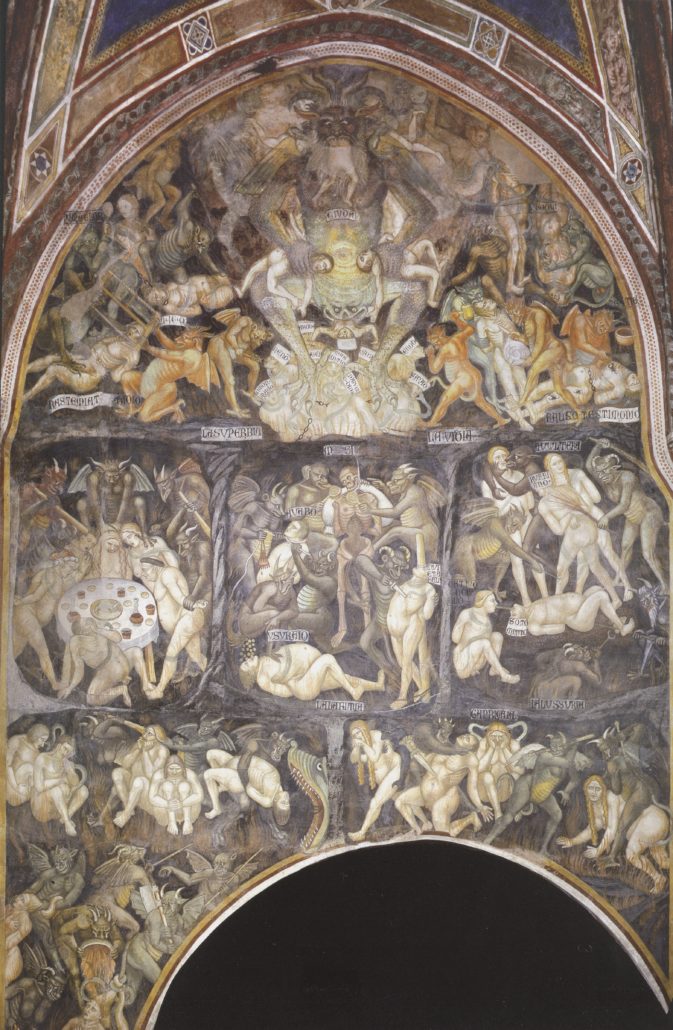Overview of Taddeo’s Last Judgment Program
Paradise & Christ as Judge
Taddeo di Bartolo’s (c. 1363-1422) late fourteenth century Last Judgment fresco program is one example of a Collegiata commission produced during this period of redefinition and development. The Sienese artist’s fresco cycle concluded the previous Old and New Testament fresco commissions (created early fourteenth century), bringing the cycle of salvation to its natural conclusion. (1)
During a construction project undertaken around 1239, the town of San Gimignano decided to reverse the orientation of the pre-existing church. (2) The old church’s apsidal wall became the new Collegiata’s facade. Created 1410-1420, after the reorientation of the church, Taddeo’s Last Judgment program consists of three large murals located on the upper nave walls above the arcade of the central vessel [fig. 4]. Upon entering the Collegiata, and whilst facing the altar, Paradise is on the right upper nave walls of the central vessel and Hell is on the left, where women typically sat during the full congregation.
On the right side of the central nave, the Virgin Mary and Jesus preside over Paradise [fig. 2]. Running parallel to the Old Testament frescoes, the Virgin and Christ sit enthroned within a circular ray nimbus, and below them winged angels serenade the celestial space with instruments. The angels provide the separation between the divine Christ and Mary and the terrestrial blessed, who line the bottom of the frescoes in neat, orderly rows. To the right of Paradise is a fresco depicting Christ as Judge above seated apostles [fig. 3]. Christ is represented seated in a ring of rainbows and surrounded by winged seraphs. Each apostle is labeled with a titulus in the vernacular underneath their feet. (3) Above them, angels carry the instruments used in Christ’s passion, the arma Christi. (4) The armed angels and named prophets Elijah and Enoch surround the enthroned Christ, whose position at the upper center of the reverse-facade completes the typological and genealogical connections between the Old and New Testament.




